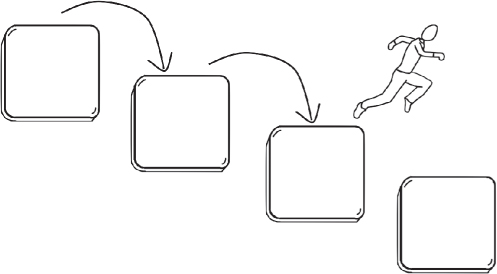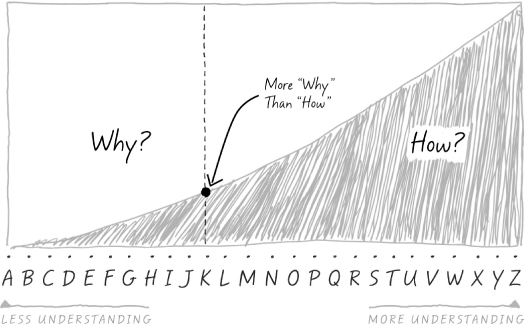Chapter 9
Description

In previous chapters, we focused on elements of explanation that introduce a new idea or explain in a way that helps the audience see it from a new perspective. These elements—context, storytelling, and connections—are most important and appropriate when the audience is near the “A” end of the scale, where they are trying to establish why an idea makes sense and building an understanding of it.
But some explanations must account for people near the other end of the scale, which means approaching explanations from a different perspective.
As a reminder, let's look at the explanation scale with the how/why curve:

As this curve illustrates, someone at “K” may need to see the why of an idea more than the how. It is important for those individuals to understand that an idea makes sense. Yet someone at “R,” who has existing understanding of the big idea, may need explanations that focus more on how. This person is more likely to have an informed perspective and need more tactical, detailed information. Consider Andre's team and the early adopters who saw themselves on the “Z” side of the scale. Explanations for this group may need explanations that focus on how more than why.
For example, a team of mechanics who are learning to use a new tool are unlikely to benefit ...
Get The Art of Explanation: Making your Ideas, Products, and Services Easier to Understand now with the O’Reilly learning platform.
O’Reilly members experience books, live events, courses curated by job role, and more from O’Reilly and nearly 200 top publishers.

